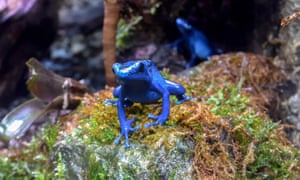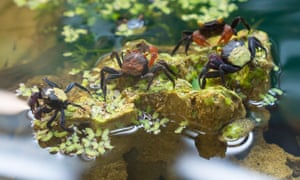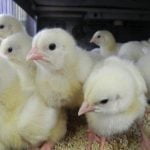
As someone who has spent a lifetime fixated on horticulture (as a kid I used to stay up late reading the RHS Encyclopaedia under my covers with a torch), I thought I had a pretty good grip on how to grow plants. But there is always a surprise in store.
Two years ago, I wandered into an exotic pet exhibition while on holiday in the Netherlands. I was blown away by the spectacular horticultural installations being made by collectors of poison dart frogs, praying mantises and colourful land crabs. I couldn’t fathom how they managed to create thriving colonies of velvety moss or immaculate living walls dripping in orchids. And, quite frankly, I felt frustrated that I only recognised about half the plants.
I learned that, unbeknown to mainstream horticulturists, there is a parallel universe of plant-growing expertise being amassed by lovers of exotic animals. Many of them have little or no formal horticultural or botanical training and yet they have come up with all sorts of ingenious ideas (see dartfrog.co.uk). These supergeeks not only have their own commercial nurseries for weird and wonderful plant species, but also radically different growing media, planting techniques and even gardening tools. Inspired by them, here are some of the things I’ve learned.

It is no secret to regular readers that I love terrariums, particularly the ones that house “Endor” landscapes of miniature mossy woodlands. But as many native UK moss species tend to grow into lanky threads of brown mess in the dark and warmth of terrariums, using the stuff from the bottom of your garden is unlikely to work. Fortunately, this conundrum has been cracked by exotic pet suppliers, who sell at least half a dozen tropical moss species, plus a few temperate ones, that will stay as neat, ground-hugging mats even indoors.
I also became fascinated by the use of solid growing media, such as tree fern trunks, to create living walls, posts and pillars, even sculptures. Plants can be attached to these fibrous substrates by simply tucking their roots into cracks and crevices or by tying or even gluing them in place. If kept consistently moist, they will root and quickly clothe the 3D landscape in green. Many suppliers sell the stuff in every shape and size, but I recommend Moss on Treefern (frogsandmore.nl/moss/). It has a transparent supply chain and sustainability certification.
The best discovery, however, were the plants themselves. Fancy a range of tiny orchids where the whole plant would fit on your fingertip? Maybe an iridescent spikemoss that shimmers like a butterfly’s wing? How about bromeliads in Avatar colours, sizes and shapes that you’ve never seen before? The only place to find this treasure trove of great vivarium plants is not from garden centres, but from shops selling supplies for animals (try dutchrana.nl). Discovering the work of these plant geeks was a revelation – like making first contact with a long, lost civilisation with new ideas and technology.
[“source=theguardian”]











